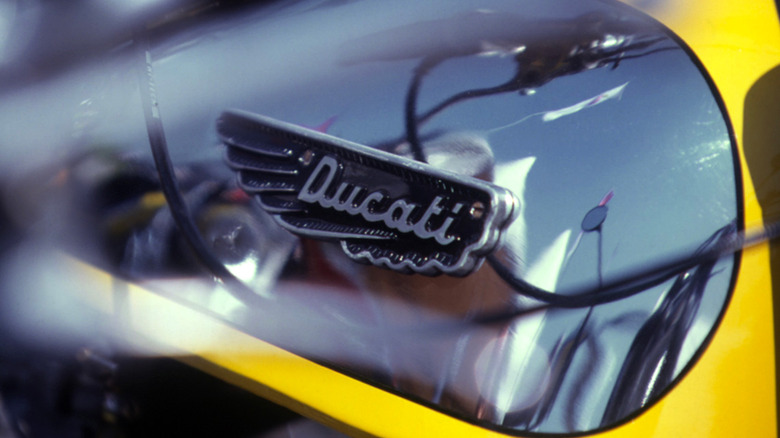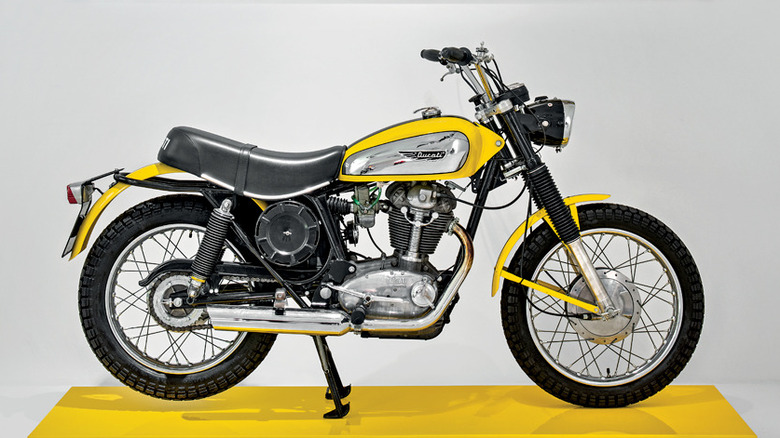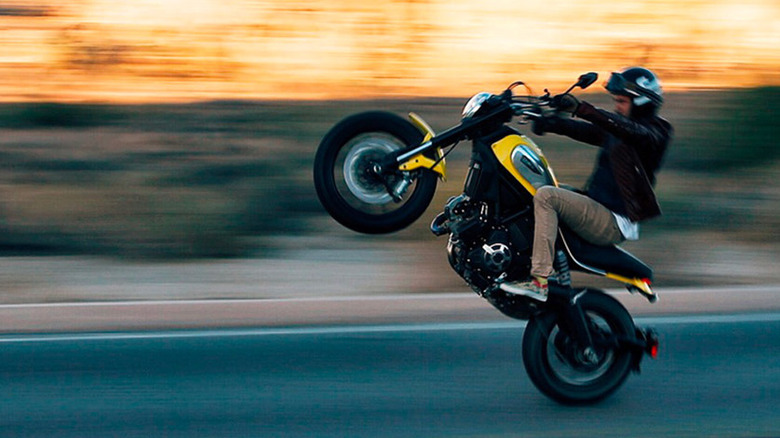The Best Years For The Ducati Scrambler (And Which To Avoid)
When you think of Ducati, the first bikes that come to mind are likely some lovely shade of red. They've probably got beautifully sculpted fairings or exposed trellis frames. Maybe you think of naked street bikes like the Monster 900, or ultra-fast superbikes like the Superleggera V4 with carbon fiber construction and all the Italian swagger you can fit in a two-wheeled package. But that's not all that Ducati offers.
The Scrambler is one of Ducati's most underrated bikes, and one of their oldest nameplates. It offers a bit of a break from the high-horsepower lineup you'd expect to see in a Ducati dealership by combining cafe-racer styling with a bit of on- and off-road capability. The Scrambler is also relatively customizable, directly from the factory, with a number of available accessories and aesthetic choices available right out of the box.
The original Scrambler debuted in the 1960s, offering reasonable performance and classic good looks, with a few different sizes and configurations — going as large as 450cc. It wasn't on sale for very long, though: the original Scrambler only lasted from 1962 until 1975. Thankfully, Ducati brought the Scrambler back in 2015, with styling that largely mirrored the original design. Since the revival of the Scrambler name, Ducati has expanded the lineup, adding features and more displacement along the way. But which model should you choose?
Years of the Ducati Scrambler to avoid
While the Scrambler was introduced in the 1960s and around for a few years back then, there aren't any models in between the original Scrambler and today's recreation. With that in mind, we'd recommend steering clear of the old Scrambler unless you've got a bit of mechanical knowledge and the patience to work on an old bike. If you're looking for a classic bike and you've got the tools/knowhow to repair one when it breaks, then go right ahead. Otherwise, we'd recommend checking out a newer Scrambler instead.
It's also worth noting that older models are also significantly less powerful than the newest Scrambler. The 450cc Scrambler made just 27 horsepower in 1968, which was respectable for the time, but that's not much compared to the 73 horsepower of the current 803cc model, or the 86 horsepower from the 1,079cc (1100) versions. Nostalgia is nice, but being able to maintain highway speeds on your way to work will be much more likely on the newer, larger Scramblers.
While we're on the subject of the larger Scramblers, it's worth mentioning the price point. The standard Scrambler Icon checks in at $10,995. The Scrambler 1100 Sport Pro however, starts at $17,195 — a hefty price for any new bike. So while we wouldn't steer people away from the Scrambler 1100, we wouldn't suggest them for riders on a budget.
Which Scrambler years are the best?
The Scrambler hasn't changed much since it was reintroduced in 2015. Sure, the more-powerful 1100 versions were added to the lineup a few years ago, and the various versions of the Scrambler have been tweaked a bit, but the changes haven't been drastic. The Scrambler received a number of updates for 2024, cutting some weight, getting a new frame and swingarm, and a new TFT instrument screen. The newest model is certainly desirable, but so are pretty much all the Scramblers since the 2015 revival.
The six versions of the current Scrambler include the Icon, Nightshift, Full Throttle, Tribute Pro, Dark Pro, and Sport Pro. The first three all use an 803cc L-Twin engine that produces 73 horsepower and 41 pound-feet of torque — plenty of power for daily commuting or a bit of hooning around. The last three (Tribute Pro, Dark Pro, Sport Pro) all use the 1,079cc that makes 86 horsepower and 65 pound-feet of torque.
Both size versions of the bike offer a number of OEM accessories like luggage racks, unique seats, and even racing silencers, so there's lots to choose from. For riders interested in the bigger engine, you'll want to look for Scramblers produced in 2020 or newer. A few unique versions of the Scrambler stand out over the last few years that may help you narrow your search too; including the Desert Sled, which offers unique suspension and significantly better dirt performance than the standard street-oriented models.


